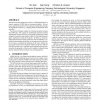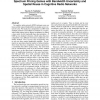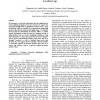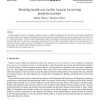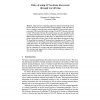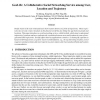INFOCOM
2011
IEEE
13 years 6 months ago
2011
IEEE
Abstract—Smartphones have changed the way people communicate. Most prominently, using commonplace mobile device features (e.g., high resolution cameras), they started producing a...
PVLDB
2010
13 years 9 months ago
2010
With the increasing deployment and use of GPS-enabled devices, massive amounts of GPS data are becoming available. We propose a general framework for the mining of semantically me...
MOBIHOC
2010
ACM
14 years 9 days ago
2010
ACM
In cognitive radio networks (CRN), primary users can lease out their unused bandwidth to secondary users in return for a fee. We study price competition in a CRN with multiple pri...
IEEECIT
2010
IEEE
14 years 28 days ago
2010
IEEE
In this paper, we describe experiments into the application of term weighting techniques from text retrieval to support the automatic identification of significant locations from ...
COR
2008
14 years 2 months ago
2008
Locating public services for nomadic population groups is a difficult challenge as the locations of the targeted populations seasonally change. In this paper, the population group...
BIOINFORMATICS
2005
14 years 2 months ago
2005
Motivation: Most of the existing methods in predicting protein subcellular location were used to deal with the cases limited within the scope from two to five localizations, and o...
TCS
2008
14 years 2 months ago
2008
We describe a type system for the Xd calculus of Gardner and Maffeis. An Xd-network is a network of locations, where each location consists of both a data tree (which contains scr...
PERVASIVE
2006
Springer
14 years 2 months ago
2006
Springer
Many pervasive-computing applications depend on knowledge of user location. Because most current location-sensing techniques work only either indoors or outdoors, researchers have ...
JMLR
2008
14 years 2 months ago
2008
When monitoring spatial phenomena, which can often be modeled as Gaussian processes (GPs), choosing sensor locations is a fundamental task. There are several common strategies to ...
DEBU
2010
14 years 2 months ago
2010
People travel in the real world and leave their location history in a form of trajectories. These trajectories do not only connect locations in the physical world but also bridge ...

